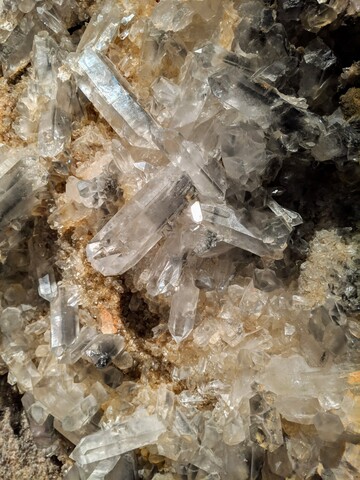How do you calculate density?

Quartz is a mineral with a high density.

Quartz is a mineral with a high density.
Density is a measure of how much mass is packed into a certain volume. It's like how tightly packed together the atoms or molecules of a substance are.
To calculate density, you need to know two things: the mass of an object and its volume. Mass is the amount of matter in an object, and volume is the amount of space it takes up.
The formula for density is:
density = mass / volume
For example, let's say you have a block of wood that has a mass of 100 grams and a volume of 50 cubic centimeters. The density of the wood would be 2 grams per cubic centimeter.
Density can tell us a lot about different substances. For example, we know that water has a density of 1 gram per cubic centimeter. This means that a cubic centimeter of water has a mass of 1 gram.
We can also use density to compare the densities of different substances. For example, the density of oil is less than the density of water, so oil will float on water.
Some examples of density:
- Water: 1 gram per cubic centimeter
- Ice: 0.92 grams per cubic centimeter
- Oil: 0.8 grams per cubic centimeter
- Gold: 19.3 grams per cubic centimeter
- Lead: 11.3 grams per cubic centimeter
Density is a very important property of matter. It can tell us a lot about different substances, and it can help us understand why some objects float while others sink.
What is density?
Density is a measure of how much mass is packed into a certain volume. It's like how tightly packed together the atoms or molecules of a substance are.
Why is density important in understanding different substances?
Density is important because it helps us understand how tightly packed the atoms or molecules are in a substance. This can tell us if an object will float or sink in water, for example.
How can we use density to compare different substances?
By comparing the densities of different substances, we can determine which is more dense and which is less dense. For example, water has a density of 1 gram per cubic centimeter, while oil has a lower density of 0.8 grams per cubic centimeter. This means that oil is less dense than water, so it floats on top of it.
Can you give more examples of substances and their densities?
Here are a few more examples of substances and their densities:
- Iron: 7.9 grams per cubic centimeter
- Aluminum: 2.7 grams per cubic centimeter
- Styrofoam: 0.05 grams per cubic centimeter
How does density help us determine if an object will float or sink?
When an object is placed in a liquid, like water, it will either float or sink depending on its density compared to the density of the liquid.
If the object's density is less than the liquid, it will float. If the object's density is greater than the liquid, it will sink.
For example, if we have a block of wood with a density of 0.7 grams per cubic centimeter, and we place it in water with a density of 1 gram per cubic centimeter, the wood will float because its density is lower than that of water.
Can you explain why some objects float and others sink using density?
The reason why some objects float and others sink is because of their density compared to the density of the liquid they are placed in.
If the object is less dense than the liquid, it will float because it is lighter and can't sink through the liquid.
On the other hand, if the object is more dense than the liquid, it will sink because it is heavier and can't stay on top of the liquid.
For example, a wooden boat floats because wood has a lower density than water, while a metal anchor sinks because it has a higher density than water.

Quartz is a mineral with a high density.